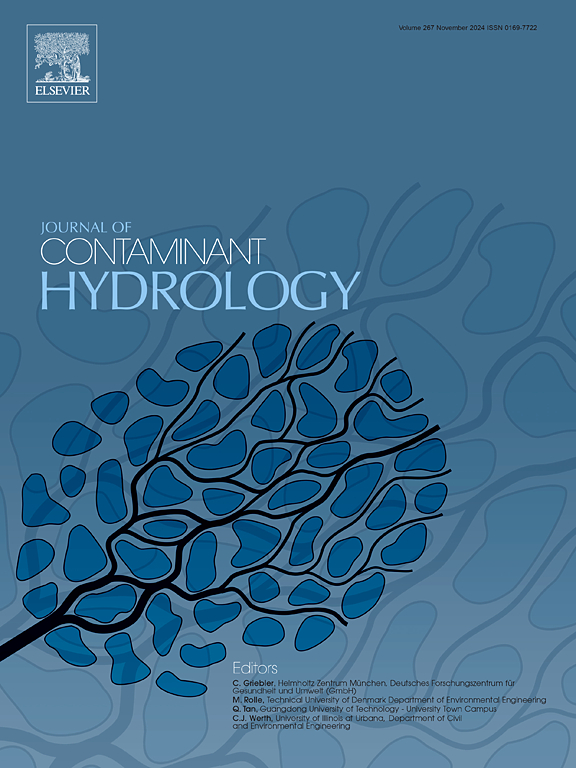First evidence of microplastics in surface water of urban waterbodies in Bhopal city, India- abundance and their characteristics
IF 3.5
3区 环境科学与生态学
Q2 ENVIRONMENTAL SCIENCES
引用次数: 0
Abstract
The present study focuses on the microplastics (MPs) abundance including identification and quantification in six major waterbodies of Bhopal city. Using the combined sampling method of bulk and volume reduced sampling the samples are collected from 19 different locations in winter, summer and monsoon weather for understanding the seasonal impact. MPs particles have been observed in the surface waters of all the water bodies of the Bhopal city across all seasons. The overall and average maximum MPs has been observed in Shahpura Lake near children's park and fishing area with overall abundance (SH2–1640 ± 162.69 particles/m3) and average abundance (SH2–1410 ± 162.69 particles/m3) during the monsoon of 2022. The least polluted waterbody is Kerwa dam having overall abundance of 510 ± 43.20 particles/m3 and average abundance of 570 ± 43.20 particles/m3 which was observed in summer of 2022. The identification by FTIR showed that the nylon and polypropylene are the most abundant types of polymers in all the locations. Statistical analysis shows that there is strong positive correlation in between the MPs abundance in different seasons. With all the above studies it can be concluded that MPs abundance in freshwater is increasing with the passage of time which is having adverse effect on the surrounding environment.
印度博帕尔市城市水体地表水中微塑料的第一个证据——丰度及其特征
本文研究了博帕尔市6个主要水体中微塑料(MPs)的丰度,包括鉴定和定量。在冬季、夏季和季风天气的19个不同地点,采用体积缩小和体积缩小相结合的采样方法采集样本,以了解季节影响。在博帕尔市各个季节的所有水体的地表水中都观察到MPs颗粒。在沙普拉湖儿童公园和渔场附近观测到总体和平均最大MPs,总体丰度(SH2-1640±162.69颗粒/m3)和平均丰度(SH2-1410±162.69颗粒/m3)在2022年季风期间。克尔瓦坝污染最小,总体丰度为510±43.20颗粒/m3, 2022年夏季平均丰度为570±43.20颗粒/m3。FTIR鉴定表明,尼龙和聚丙烯是所有地点最丰富的聚合物类型。统计分析表明,不同季节MPs丰度之间存在较强的正相关关系。通过以上研究可以得出结论,淡水中MPs丰度随着时间的推移而增加,这对周围环境产生了不利影响。
本文章由计算机程序翻译,如有差异,请以英文原文为准。
求助全文
约1分钟内获得全文
求助全文
来源期刊

Journal of contaminant hydrology
环境科学-地球科学综合
CiteScore
6.80
自引率
2.80%
发文量
129
审稿时长
68 days
期刊介绍:
The Journal of Contaminant Hydrology is an international journal publishing scientific articles pertaining to the contamination of subsurface water resources. Emphasis is placed on investigations of the physical, chemical, and biological processes influencing the behavior and fate of organic and inorganic contaminants in the unsaturated (vadose) and saturated (groundwater) zones, as well as at groundwater-surface water interfaces. The ecological impacts of contaminants transported both from and to aquifers are of interest. Articles on contamination of surface water only, without a link to groundwater, are out of the scope. Broad latitude is allowed in identifying contaminants of interest, and include legacy and emerging pollutants, nutrients, nanoparticles, pathogenic microorganisms (e.g., bacteria, viruses, protozoa), microplastics, and various constituents associated with energy production (e.g., methane, carbon dioxide, hydrogen sulfide).
The journal''s scope embraces a wide range of topics including: experimental investigations of contaminant sorption, diffusion, transformation, volatilization and transport in the surface and subsurface; characterization of soil and aquifer properties only as they influence contaminant behavior; development and testing of mathematical models of contaminant behaviour; innovative techniques for restoration of contaminated sites; development of new tools or techniques for monitoring the extent of soil and groundwater contamination; transformation of contaminants in the hyporheic zone; effects of contaminants traversing the hyporheic zone on surface water and groundwater ecosystems; subsurface carbon sequestration and/or turnover; and migration of fluids associated with energy production into groundwater.
 求助内容:
求助内容: 应助结果提醒方式:
应助结果提醒方式:


